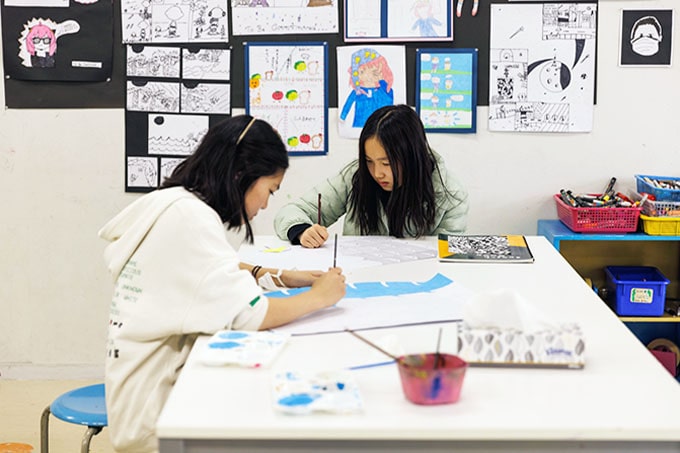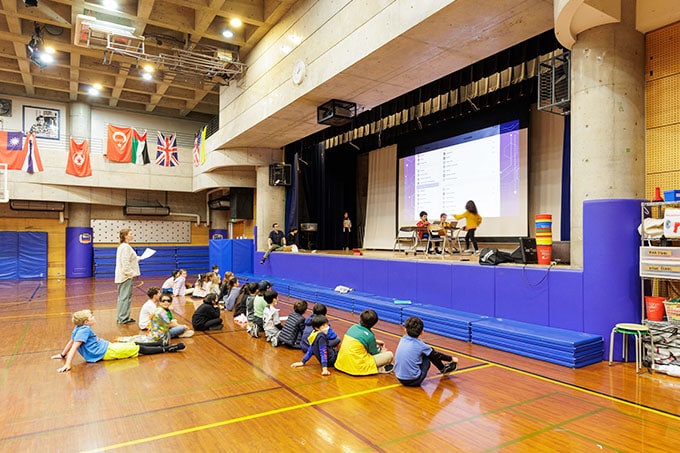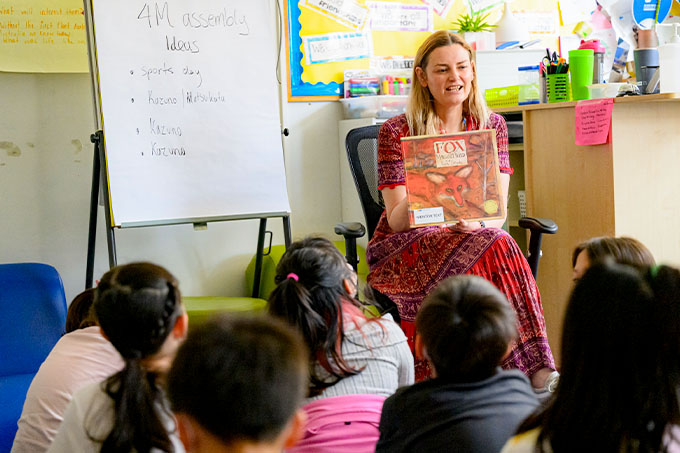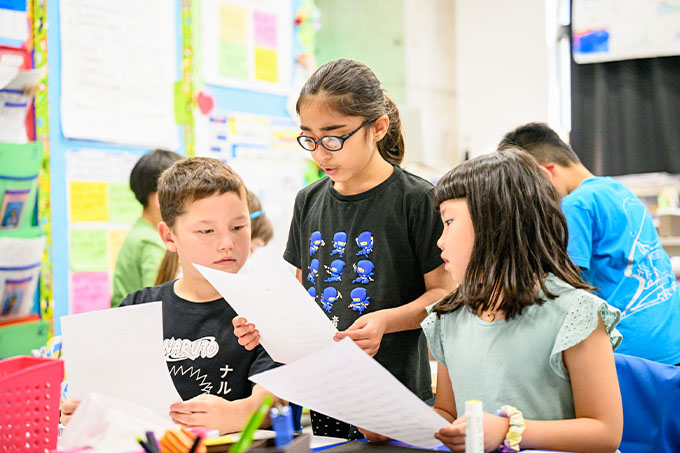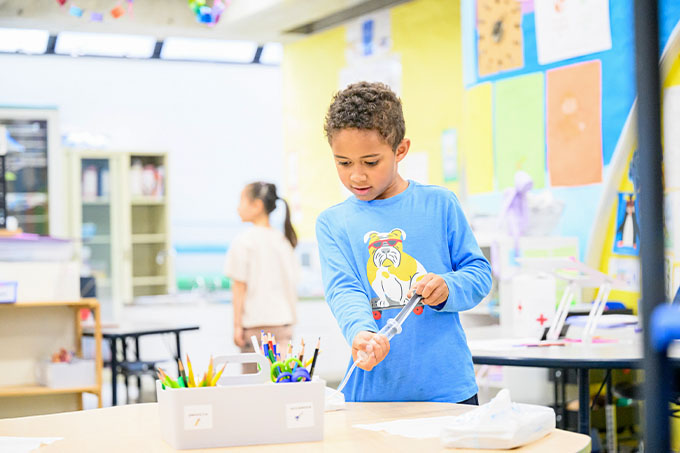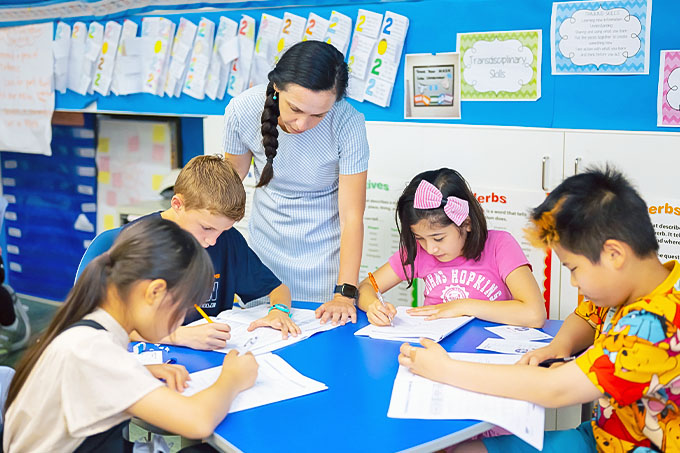
Written by Andrew Chin, SRC
When Tané Matsukata, the granddaughter of a former Japanese prime minister, returned to Tokyo after living in America for 17 years, she saw the devastation World War II had caused and sought a better future that would ensure more global harmony and peace.
Educating globally minded students, able to communicate in more than one language, was a path she felt would yield the greatest impact.
She experienced these attributes in her own life and wanted this style of education available to those living in Tokyo, even if it was just a small school at first.
What started with an initial cohort of four students in 1949 has grown to one of Tokyo’s most renowned international schools, which currently serves 480 students from kindergarten to grade nine.

A Multicultural Vision
A central tenant in Matsukata’s educational vision was the belief that by learning a second language, children would transcend the boundaries of their own culture and become more globally minded.
Nishimachi’s commitment to that idea remains today. Although classes are predominantly taught in English, the school’s renowned Japanese program includes daily 45–60 minute language classes that start in kindergarten.
The school has six levels of Japanese, giving students the ability to develop the capability in reading, writing, listening, and speaking, at any level. Students in the Middle school have Japanese social studies in addition to Japanese language. Advanced Japanese learners use Ministry of Education approved textbooks.
“I’m really proud of my son,” says Joyce S., whose grade five son is among her three children to study at Nishimachi. “He gets told daily how great he sounds as an almost native Japanese speaker.”

Japanese cultural holidays are celebrated within the school’s curriculum and its multicultural outlook is also reflected in its student makeup, which currently covers 42 different nationalities.
“A Nishimachi education offers children the tools and life skills to connect and collaborate with others from diverse backgrounds in an increasingly interdependent world.”says head of school Karen O’Neill, who is also a Nishimachi alumnae.

“We embrace students learning multiple languages. Students and their families feel welcome and very comfortable in our community. They will always find a cohort of other families that they can communicate with in their home language, whatever that might be.”
This is a feature that drew Sarah N. to enroll her two daughters to the school.“Nishimachi has a great community of different nationalities from all over the world, and also has a clear focus of celebrating being in Japan. We believe this is a very positive influence for our children,”she says.

A Neighborhood Institution

Another unique feature of Nishimachi International School is that it remains in its original Moto Azabu location, conveniently between Hiroo and Azabu-Juban stations. With around 75 percent of the school’s students living in the ward, most parents are able to easily drop off their children at school, which allows them to connect with each other.
“The proximity of our campus to where many of our families live ensures students and parents can come to our campus easily. This is an opportunity for the school to resonate as a neighborhood school not only with the students but with the entire family,” says Mary Margaret Mallat, the school’s Director of Advancement.

“Parents meet each other at drop off or at pick up and see each other at class events. Those same parents are the ones who have sustained our community events like the food fair and the gala for many years.”
Although many families live within walking distance, the school welcomes students from anywhere in the city and Sarah N. says that the school’s close community makes the commute from Chiyoda-ku “worth it.”
“We do talk about the centrally located neighborhood concept,” adds Mallat. “Students can reach us by public bus, or three subway lines, whether they’re in Yoyogi, Shinagawa or Meguro, and they still feel a strong sense of belonging.”
“The school’s close knit community is important to its students as much as their parents. With six buildings clustered around its playground, O’Neill credits Nishimachi’s cozy confines for fostering that closeness.
“The central nervous system of the school is the playground because the children always cross through the center. Everyday students of multiple ages cross through the center and have a chance to interact. This is different from many other schools” says O’Neill.
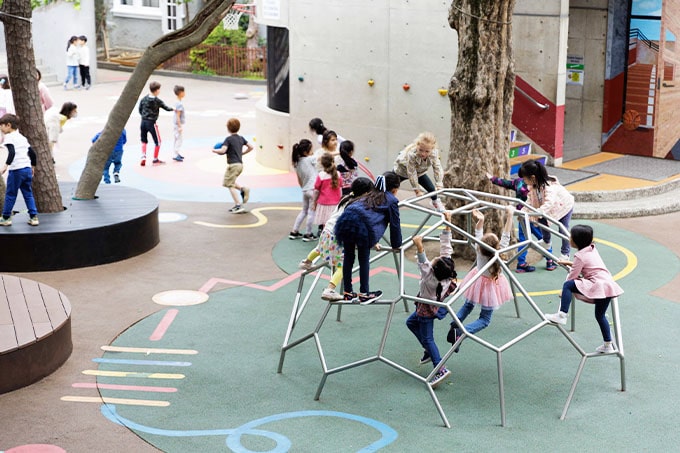
Despite its small size, the school maximizes its premises. Playgrounds and recreational facilities can be found on the roofs of its elementary and middle school buildings, while its kindergarten is located conveniently across the street. Nishimachi also boasts a gym, music rooms, a black box theater, studio spaces, and the three-floor Yashiro Media Center, which houses over 17,000 items in its library.
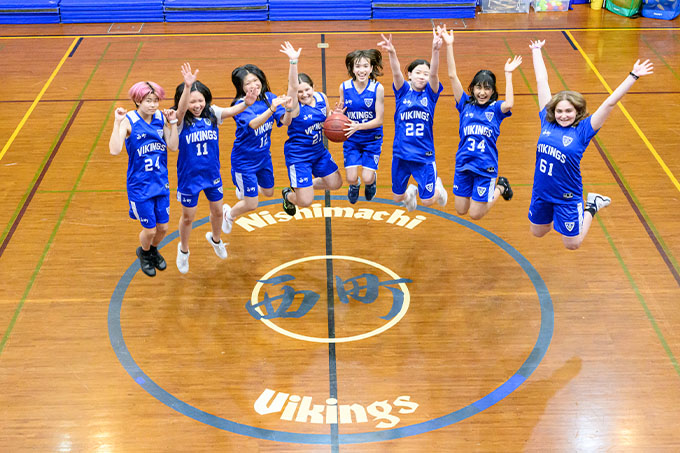

The school is also home to Matsukata House, the former Matsukata family residence, which has been designated a historic building by the Tokyo government. Primarily an administrative building, it also houses the Matsukata House Museum, which opened last year and celebrates the school’s history and its founder’s vision.
“Students also use the museum now as an original source material opportunity. We have plan books from 1988, the original floor plans of the building, and the first diploma that was issued in 1952,” notes Mallat.

“We have a digital screen that helps us take students and visitors through this journey together. All of the yearbooks are digitized and visitors to the museum, including many alumni, can not only learn but reminisce about their time at Nishimachi.”
The school’s rich history can also be found in its outdoor education center, Camp Ryoichiro Arai or Kazuno, which is located in Gunma Prefecture. From grade four, students go for an annual trip there where they make connections and pursue challenges through hiking, cooking, campfires, rice planting, and other activities.
“It’s just a great experience outside of a school setting where students can learn in nature, and going there every year, creates unforgettable memories and bonds,” says Kiki Jiang Yamaguchi, Admissions Manager and a Nishimachi alumnae.
Parent Joyce S. agrees, noting that the annual retreat is what her kids look most forward to in the school year. “It’s the highlight of their year,” she adds.
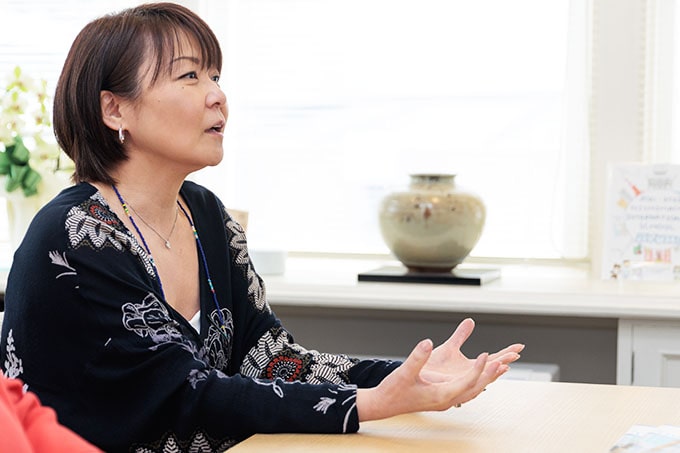
While the school is intrinsically tied to its rich history and founding mission, O’Neill notes “we are always looking at best practices” in navigating its future.
It has incorporated technology by providing every student an iPad and every Grade 9 student their own computer. A robotics program has been developed, while two spaces have been redesigned to incorporate a design and makerspace for its STEAM program.
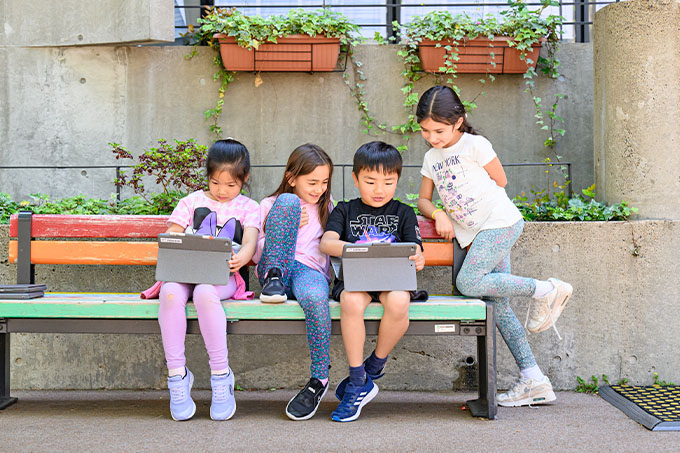
In addition, the school uses the Seesaw and Teamie platforms which allow for teachers and students to communicate seamlessly with parents by posting photos and videos of what is happening in class.
“Seesaw is a really helpful and a nice form of communication. When you pick the children up from school, you actually know some of the things that they were working on and they are excited that you are aware of what they do all day in school,” says Sarah N.
The school also started its after-school care program in 2019 to meet the needs of families with two working parents. The after school activities program offers over 40 programs from coding to cooking, taiko to tennis, and fashion design to finance and entrepreneurship.
“For many families, this has been an added feature of being able to have their children in the same environment with friends up to 6:00 at night. It’s been a lovely opportunity for our middle school students who serve as mentors and volunteers in the program,” Mallat says.
O’Neill notes that the school is currently working on several projects for the future including a campus redevelopment plan, finishing its DEI plan, codifying its “Nishimachi Way of Learning”, and assessing whether it’s feasible to extend to a high school.
It is all part of efforts to ensure that the school retains its distinct identity. O’Neill notes that she wouldn’t have returned to Japan from America to manage any other school but Nishimachi as she “already felt a connection to the school and its culture.”
“Alumni of this school may have graduated from other high schools and colleges but it feels as if their first identity is here,” Mallat adds. “It’s a strong connection for them and for their families.”
ABOUT THE SCHOOL
Nishimachi International School
- Address
- 2-14-7 MotoAzabu, Minato-ku Tokyo, Japan 106-0046
- Language of instruction
- English
- Age Range
- Ages 5 to 15
- Number of students
- 480
- Kindergarten
- 60-66
- Grades 1-5
- 360
- Grades 6-9
- 120
- Accreditations/Inspections
- ・Western Association of Schools and Colleges (WASC)
・Council of International Schools (CIS)
・Japan Council of International Schools (JCIS) - Website
- https://www.nishimachi.ac.jp/
School Location and Residences in Vicinity
